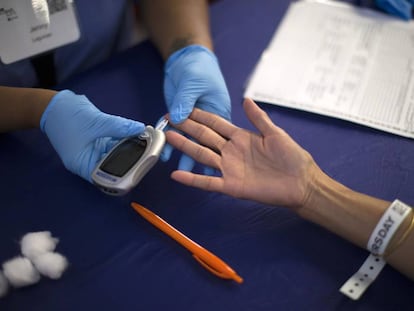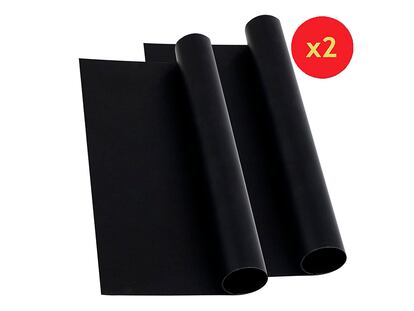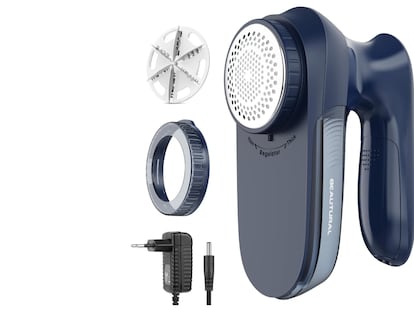What to expect from a cystoscopy
The purpose of the procedure is to diagnose, monitor and treat conditions affecting the bladder and urethra

Any major changes in bladder habits that are not going away or improving require a visit to your doctor for further investigation. These changes could include noticing blood in your urine, incontinence, overactive bladder, or painful urination. In order to determine the cause and how to treat it, your doctor may need to do a procedure called a cystoscopy. Being told you need a cystoscopy may cause apprehension but understanding the procedure is the first step in alleviating those fears.
What is a cystoscopy?
A cystoscopy or cystourethroscopy, is a procedure that allows a doctor to examine the lining of your bladder and urethra in detail.
Why would a person need a cystoscopy?
Understanding the procedure is the first step to alleviating fears
The purpose of a cystoscopy is to diagnose, monitor and treat conditions affecting the bladder and urethra. Some of the common reasons for a person needing a cystoscopy include urinary problems such as needing to urinate frequently, painful urination, blood in the urine, frequent urinary tract infections, an overactive bladder, or pelvic pain.
This procedure is useful to the doctor as it can reveal several conditions that may be causing issues such as:
Bladder tumors
Bladder stones
Bladder cancer
Blockages
Enlarged prostate gland
Noncancerous growths
Problems with the ureters (tubes) connecting your kidneys to your bladder
A cystoscopy may also be performed to:
Treat underlying bladder conditions such as removing small bladder tumors or stones, or to take a sample of bladder tissue
Take a urine sample to check for tumors or infection
Insert a small tube to assist with urine flow
Inject dye to identify kidney problems on an x-ray
How is a cystoscopy performed?
This procedure can be done on an outpatient basis. Before it is performed, you will need to empty your bladder after which you will be placed on an exam table. To reduce pain, a liquid or gel local anesthetic may be used on your urethra.
Once preparations are done for the procedure, a thin, lighted tube called a cystoscope is inserted through the urethra into the bladder. The doctor lubricates the scope with gel and carefully inserts it into the urethra. There may be a feeling of burning or a feeling of urinating when this happens.
The doctor will look at the bladder through the lens of the scope. In order to have a clear view of the bladder it will be filled with water or saline infused through the cystoscope stretching the bladder wall. On average, it takes about five to 10 minutes to perform a cystoscopy.
Interpreting the results
If everything is normal, the bladder wall should appear smooth with no blockages and the bladder should be of normal size, shape, and position. If any tissue appears abnormal, the cystoscope can be used to remove a small sample. Results could be available immediately or it could take a few days. If a biopsy is taken, it will be sent to a lab for review which could take a few days to several weeks.
Recovery after the procedure
Once the cystoscope is removed, the urethra may be sore and patients may experience a burning sensation when urinating or more frequent urination that may last up to 48 hours. There may also be some blood in the urine at first, but this should go away within 12 to 24 hours. Emptying the bladder completely is important and drinking plenty of water is encouraged to ease any burning and bleeding that may occurr.
Take time to rest and if a biopsy is done, it will take time to heal. During this time, avoid heavy lifting and sexual intercourse until the doctor gives permission to do so.
Dr. Samadi is a board-certified urologic oncologist trained in open and traditional and laparoscopic surgery and is an expert in robotic prostate surgery. He is chairman of urology, chief of robotic surgery at Lenox Hill Hospital. He is a medical contributor for the Fox News Channel's Medical A-Team. Follow Dr. Samadi on Twitter, Instagram, Pinterest, SamadiMD.com, davidsamadiwiki, davidsamadibio and Facebook.
Tu suscripci¨®n se est¨¢ usando en otro dispositivo
?Quieres a?adir otro usuario a tu suscripci¨®n?
Si contin¨²as leyendo en este dispositivo, no se podr¨¢ leer en el otro.
FlechaTu suscripci¨®n se est¨¢ usando en otro dispositivo y solo puedes acceder a EL PA?S desde un dispositivo a la vez.
Si quieres compartir tu cuenta, cambia tu suscripci¨®n a la modalidad Premium, as¨ª podr¨¢s a?adir otro usuario. Cada uno acceder¨¢ con su propia cuenta de email, lo que os permitir¨¢ personalizar vuestra experiencia en EL PA?S.
En el caso de no saber qui¨¦n est¨¢ usando tu cuenta, te recomendamos cambiar tu contrase?a aqu¨ª.
Si decides continuar compartiendo tu cuenta, este mensaje se mostrar¨¢ en tu dispositivo y en el de la otra persona que est¨¢ usando tu cuenta de forma indefinida, afectando a tu experiencia de lectura. Puedes consultar aqu¨ª los t¨¦rminos y condiciones de la suscripci¨®n digital.


































































